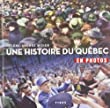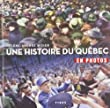-
-
2006., Greystone Books ; Distributed in the U.S. by Publishers Group West Call No: 799.2 M586m Edition: 1st English language ed. Availability:1 of 1 At Your Library
-
-
1992., Everyman's Library Call No: Fic Dic Availability:1 of 1 At Your LibraryOnline study guide Series Title: Penguin classicsSummary Note: Great Expectations is written in a semi-autobiographical style and is the story of the orphan Pip, writing his life from his early days of childhood until adulthood and trying to be a gentleman along the way. Novel follows Pip's development through life after an early meeting with the escaped convict Abel Magwitch, who he treats kindly despite his fear. His unpleasant sister and her humorous and friendly blacksmith husband, Joe, bring him up. Crucial to his development as an individual is his introduction to Miss Havisham, a now aging woman who has given up on life after being jilted at the altar. Cruelly, Havisham has brought up her daughter Estella to revenge her own pain and so as Pip falls in love with Estella she is made to torture him in romance. Aspiring to be a gentleman despite his humble beginnings, Pip seems to achieve the impossible by receiving a fund of wealth from an unknown source and being sent to London with the lawyer Jaggers. He is employed but eventually loses everything and Estella marries another. His benefactor turns out to have been Magwitch and his future existence is based upon outgrowing the great expectations and returning to Joe and honest laout. Eventually he is reunited with Estella.
-
-
1936., The Macmillian company of Canada limited Call No: 971.417 B233k Availability:1 of 1 At Your Library
-
-
2012., Véhicule Press Call No: QWF 940.53 B967l Availability:1 of 1 At Your Library Summary Note: The Second World War came hard on the heels of a devastatingDepression in which families struggled to survive.Life on the HomeFrontpaints a poignant portrait of a city coping with the demandsof war. Montrealers, along with other Canadians, were being askedfor more sacrifice but this time it would include sending their sons,brothers, fathers and husbands off to war. Montrealers had toUse it Up, Wear it Out, Make it Do, and Do Without· as one slogancautioned, and this they did. Many women went to work for the firsttime and often enjoyed the heady success of doing a manœs job·and earning a regular salary.Life on the Home Frontdescribes how dissent was also an ever-presentreality. Montreal was often awash with anti-war banners and angryspeeches which kept the police and journalists busy. Prime MinisterWilliam Lyon Mackenzie King had to walk a fine line in keeping thecountry together and united at a time of grave crisis.All was not gloom and doom, however. Servicemen passing throughMontreal as well as locals could enjoy the most vibrant nightlifein Canada. The cozy relationship between city officials, the policeand the owners of disorderly houses· as well as the shady characterswho ran gambling establishments gave the name Sin City·to Canadaœs metropolis.
-
-
2014., Adult, McGill-Queen's University Press Call No: QWF 305.520 Y68p Availability:1 of 1 At Your Library Series Title: Studies on the history of Quebec Volume: 25.Summary Note: "History has often ignored the influence in modern Quebec of family dynasties, patriarchy, seigneurial land, and traditional institutions. Following the ascent of four generations from two families through eighteenth-century New France to the onset of the First World War, Patrician Families and the Making of Quebec compares the French Catholic Taschereaus and the Anglican and English-speaking McCords. Consulting private, institutional, and legal archives, Brian Young studies eight family patriarchs. Working as merchants or colonial administrators in the first generation, they became seigneurial proprietors, officeholders, and prelates. The heads of both families used marriage arrangements, land stewardship, and judgeships to position their heirs. Young shows how patriarchy was a central force in both domestic and public life, as well as the ways in which Taschereau and McCord family strategies extended into the marrow of Quebec society through moral authority, influence on national identities, and their positions within senior offices in religious, judicial, and university institutions."--From publisher.
-
-
2011., McGuill-Queen's University Press Call No: QWF 307.76 O42p Availability:1 of 1 At Your Library Series Title: Carleton library seriesSummary Note: Benefiting from Montreal's remarkable archival records, Sherry Olson and Patricia Thornton use an ingenious sampling of twelve surnames to track the comings and goings, births, deaths, and marriages of the city's inhabitants. The book demonstrates the importance of individual decisions by outlining the circumstances in which people decided where to move, when to marry, and what work to do. Integrating social and spatial analysis, the authors provide insights into the relationships among the city's three cultural communities, show how inequalities of voice, purchasing power, and access to real property were maintained, and provide first-hand evidence of the impact of city living and poverty on families, health, and futures. The findings challenge presumptions about the cultural "assimilation" of migrants as well as our understanding of urban life in nineteenth-century North America. The culmination of twenty-five years of work, Peopling the North American City is an illuminating look at the humanity of cities and the elements that determine whether their citizens will thrive or merely survive.




















